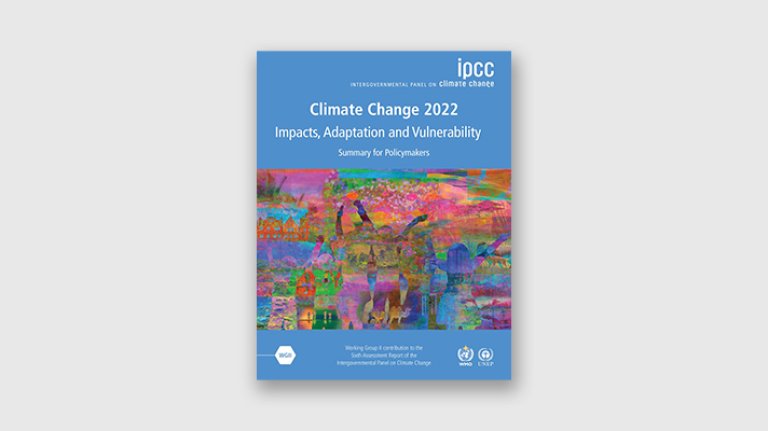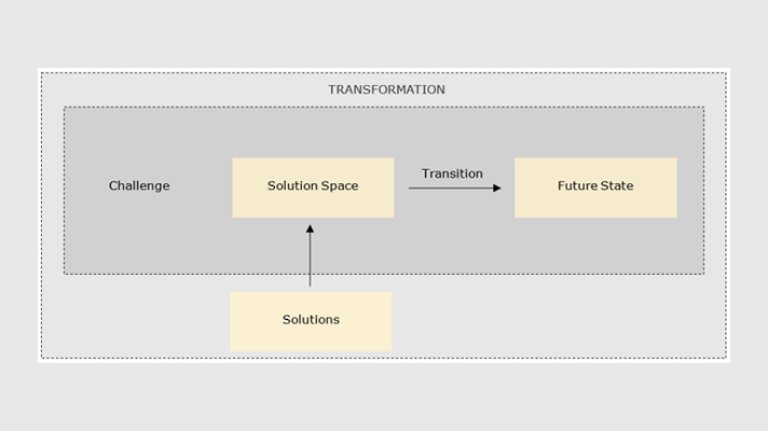Masterpieces are unique creations that we rarely get to witness or experience. Sometimes they're artistic, or culinary or even sporting. Possibly overlooked in the recent turmoil is a scientific masterpiece by the UN's Intergovernmental Panel on Climate Change (IPCC). This impressive piece of work offers a dire warning about the climate risks the world faces, but also provides many signposts to potential opportunities that lie in solving them.
"Climate Change 2022: Impacts, Adaptation and Vulnerability", presented by the IPCC on February 28th 2022, is a treasure box of insights on climate change. Compiled in collaboration by 270 scientists from 67 countries, as many as 34 000 sources have been used to produce the final research. The report presents the latest advances in climate science in the second part of IPCC's sixth assessment report since the first report was published in 1990. It is the second in a series of three.

The report, which is huge and possibly overwhelming, focuses on transformation and transitions. What it highlights is that we face an unprecedented, compounded set of climate challenges that need to be addressed through climate mitigation and adaptation. These compounded challenges not only place fulfillment of the UN Sustainable Development Goals at risk, but also pose an existential threat to mankind's existence.
Compound Risks
Key takeaways from the report are the following¹:
- Climate change is more rapid and severe than ever observed before. Out of the 127 identified risks in the report, mid-and long-term impacts are multiple times higher than the currently observed risks
- Climate adaptation helps both humans and nature, but the speed is not sufficient. Lack of adaptation will lead to extensive climate migration, both due to voluntary migration to seek improved living conditions, and forced evacuation due to acute climate-related catastrophes
- Negative impacts strike unevenly across different regions. The most vulnerable regions are West-, Central- and East Africa, South Asia, Central and South America, Small Island Developing States and the Arctic
- Around half of the global population, between 3.3 to 3.6 billion people, are highly vulnerable to climate change. From 2010 to 2020, human mortality from floods, droughts and storms was fifteen times higher in highly vulnerable regions, compared to very low vulnerability regions
- Key infrastructure systems like sanitation, water, health, transport, communication and energy will be increasingly vulnerable if design standards do not include climate adaptation
- Heat waves and drought will severely impact human health through rapidly spreading diseases, malnutrition, air pollution, lack of water, floods and reduced yield related to food production and accessibility
Opportunity for Transformative Solutions

Slightly more extensive findings from the report are the following²:
1. Transformative Solutions
a. Solutions are defined as effective (reduces climate risk), feasible (possible and desirable, considering barriers, enablers, synergies, and trade-offs), and just (respects principles of distributive, procedural, and recognitional justice) means of "reducing climate risk, increasing resilience, and pursuing other climate-related societal goals"
b. Solution space is defined as "the space within which opportunities and constraints determine why, how, when and who adapts to climate risks" (Haasnoot et al., 2020). Enablers enhance the feasibility of adaptation options and include governance, finance and knowledge. Effective governance, adaptation finance and nature-based solutions are important enablers for expanding the solutions space and reducing adaptation gaps.
c. Transformation is defined as “a change in the fundamental attributes of a system including altered goals or values”. The related concept of transition is defined as “the process of changing from one state or condition to another in a given period of time”
d. Transition is presented in five systems: "energy, land and ecosystem, urban and infrastructure, industrial and societal. In the past, transformations of such scale have been associated not only with technological and economic changes, but with shifts in most aspects of society"
2. A figure in the report of global temperatures based on climate data 70 000 years back underscores the unprecedented weight of quality research. Research based on Antarctic ice drilling has enabled the figure in the final report that shows how humanity surpasses temperatures ever experienced since the origin of agriculture³.
3. Solutions for climate adaptation include:
a. Increased use of grey, green, and blue infrastructure. These refer to urban infrastructure, plants, and water-based elements.
b. More redundancy in power systems and other networks
c. Improved health care systems, disaster management and early disaster warning
d. Better management of land, soil and fisheries
e. Improved water efficiency: Policies to reduce demand can improve water security
f. Urban planning, upgrading design standards and city plans, implementing nature-based solutions, re-planting and greenification
g. Insurance and diversified livelihoods, changing diets and reducing food waste
h. Alternative protein sources for human food and livestock feed (insect-derived protein, high-protein woody plants like paper mulberry, algae and seaweed
Investment Implications
Drawing from the latest climate science, one may be quick to underscore the importance of safeguarding infrastructure from extreme weather events. Investment themes that need increased capital flows are energy efficient air conditioning, green buildings, nature-based solutions, alternative proteins, water management, urban planning, and investments that ensure a just transition.
Our flagship solutions fund Storebrand Global Solutions has exposure to solution companies within the urban planning segment, which promotes climate resilience and nature-based solutions. Acciona and Hannon Armstrong Sustainable Infrastructure are two portfolio companies that invest heavily in such sustainable infrastructure. The cyber security segment in our fund Storebrand Equal Opportunities is interesting when it comes to protecting critical infrastructure like power grids, water distribution systems, railways, communication infrastructure and buildings. Solution company examples within cyber security are Okta, Crowdstrike and Palo Alto Networks. In our fund Storebrand Renewable Energy, a solution company that combines climate mitigation with adaptation is Enphase Energy, which delivers rooftop solar with hurricane-proof technologies and blackout-resilient battery and inverter systems. Our fund Storebrand Smart Cities gives exposure to water-related solutions, for example the water drainage and treatment companies Advanced Drainage Systems, Xylem and Evoqua Water Technologies.
Looking Ahead
In a reality that suddenly seems both chaotic and uncertain, nudging capital towards solutions may be a minor solace. However, market signals do matter. Utilizing the power of finance is a vote for a better future for all of us.
The next masterpiece with insights from the IPCC will be the final section of the sixth assessment report, Mitigation of Climate Change, which will be published on April 4th 2022.
***
¹IPCC, 2022: Summary for Policymakers [H.-O. Pörtner, D.C. Roberts, E.S. Poloczanska, K. Mintenbeck, M. Tignor, A. Alegría, M. Craig, S. Langsdorf, S. Löschke, V. Möller, A. Okem (eds.)]. In: Climate Change 2022: Impacts, Adaptation, and Vulnerability. Contribution of Working Group II to the Sixth Assessment Report of the Intergovernmental Panel on Climate Change [H.-O. Pörtner, D.C. Roberts, M. Tignor, E.S. Poloczanska, K. Mintenbeck, A. Alegría, M. Craig, S. Langsdorf, S. Löschke, V. Möller, A. Okem, B. Rama (eds.)]. Cambridge University Press. In Press. Available at: https://www.ipcc.ch/report/ar6/wg2/resources/spm-headline-statements/
²IPCC, 2022: Climate Change 2022: Impacts, Adaptation, and Vulnerability. Contribution of Working Group II to the Sixth Assessment Report of the Intergovernmental Panel on Climate Change [H.-O. Pörtner, D.C. Roberts, M. Tignor, E.S. Poloczanska, K. Mintenbeck, A. Alegría, M. Craig, S. Langsdorf, S. Löschke, V. Möller, A. Okem, B. Rama (eds.)]. Cambridge University Press. In Press. Available at: https://report.ipcc.ch/ar6wg2/pdf/IPCC_AR6_WGII_FinalDraft_FullReport.pdf
³https://report.ipcc.ch/ar6wg2/pdf/IPCC_AR6_WGII_FinalDraft_FullReport.pdf, page 79




